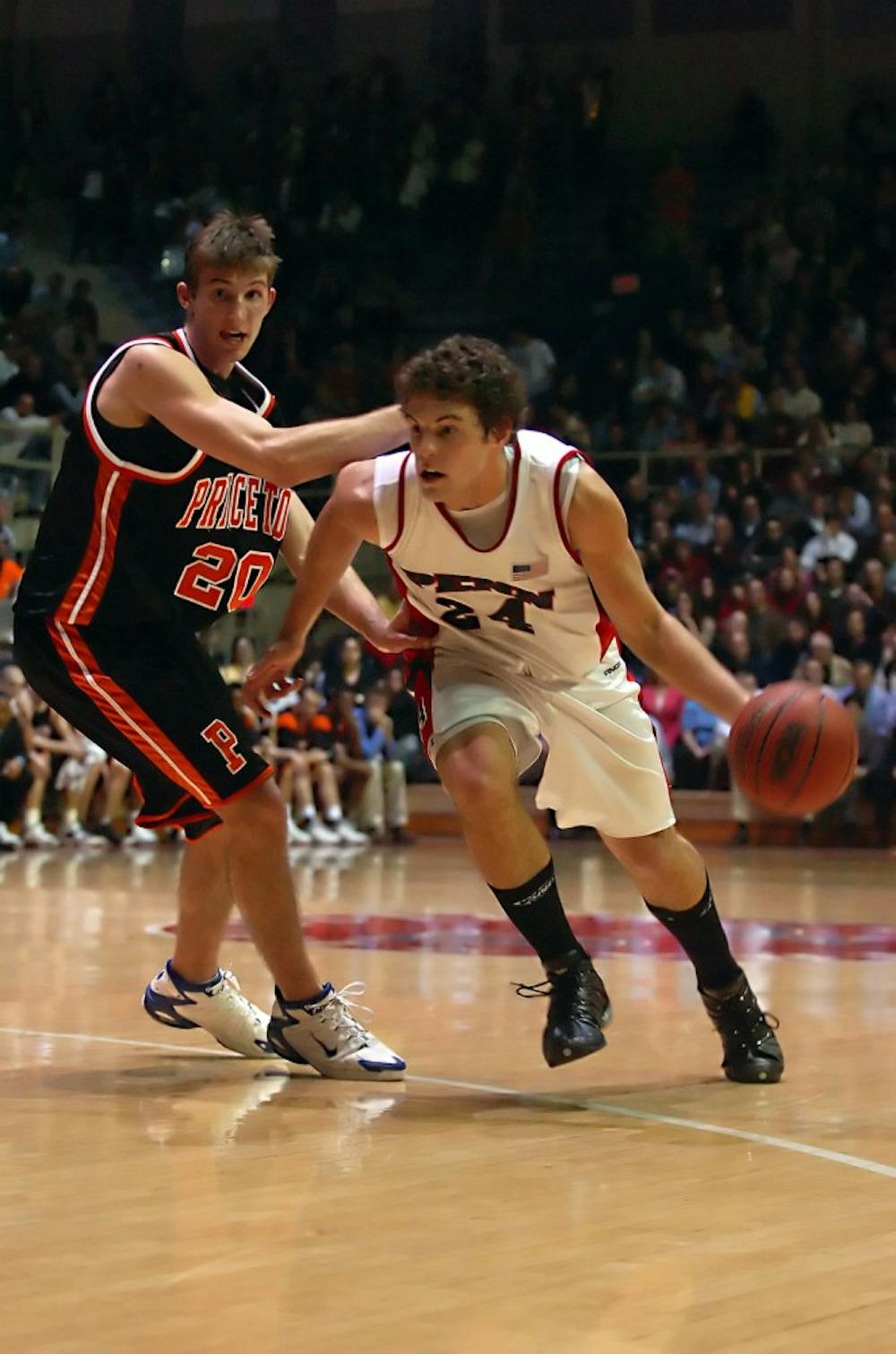With barely two minutes remaining in a January 1971 game against visiting archrival Princeton, the Pennsylvania men’s basketball team found itself in a seven-point hole.
“Princeton [players], in the last minute or two, were high-fiving each other … maybe prematurely congratulating themselves,” recalled Penn director of Athletics Steve Bilsky, then a senior starter at guard.
But in the waning minutes, the Quakers — No. 4 in the nation and on their way to an undefeated Ivy season — cut into the lead. Suddenly, the Tigers weren’t so sure about sealing their victory.
Pennsylvania inched its way back and, down two with one second remaining, David “Corky” Calhoun nailed a 22-foot jumper at the buzzer — a shot he still remembers today.
“I have a vivid memory of that game,” Calhoun said. “That was before three-pointers. That tied the game and took it into overtime.”
The ‘Quakes’ won, 66-62, and carried the momentum to the Big Dance.
While it’s often difficult to discern exactly when sports rivalries emerge, the Penn-Princeton rivalry was spurred on by the official inception of the Ivy League and its 14-game season in 1956. The teams first played each other in 1902.
Former Pennsylvania Gov. Ed Rendell, a 1965 Penn graduate, remembered his college days when the Bill Bradley-led Tigers went 6-2 against Penn and won five of the first nine League titles. But that didn’t kill the young rivalry.
Rendell graduated but stuck around Philadelphia and continued to follow his alma mater, which won its first Ivy League championship in the 1965-66 season.
So it’s no surprise that Rendell was at the Palestra six years later, watching Calhoun beat that buzzer.
“Even in those games when we dominated the League, Princeton always gave us a tough game,” Rendell said in reference to Penn’s six-straight Ivy titles from 1970 to 75.
Fast forward eight years to 1979, and the rivalry continues.
Despite Penn’s obvious presence in NCAA basketball — coach Bob Weinhauer led the Quakers to the Final Four that season — the road to the NCAA tournament still marched (sometimes staggered) through Princeton. Both games went to overtime. Both games went to Penn.
As the top two teams in a league that has never held a postseason tournament, Penn-Princeton games were win or go home.
“I got to the point where I disliked seeing the colors black and orange,” Weinhauer said. “And I wanted our student body to dislike those colors, and I wanted our team to dislike those colors. We never talked about the players by name — we only talked about them as a number.”
And nearly anyone who witnessed a Princeton basketball game at the Palestra — before 2008, that is — would likely echo the sentiment.
“I couldn’t say it any better,” Bilsky said when he heard Weinhauer’s take. “You try to be respectful and you try to appreciate the sportsmanship … There’s a general dislike that exists between the two schools.”
But after three of the rockiest years in Penn’s program history, does that statement still hold true?
For a 44-year stretch from 1963 to 2007, only three times did a team other than Penn or Princeton win the League.
Current Penn coach Jerome Allen didn’t lose to Princeton after his freshman season, but those bitter defeats stand out the most in his mind.
“You remember the games you lost more than you remember the games you won,” Allen said.
But the matchups gradually began to dwindle in significance after 2007, when Ibby Jaaber, Steve Danley and Mark Zoller led the Quakers to the program’s 25th championship.
Since then, Cornell has won the last three titles. Current Penn students have yet to see a rivalry match with title implications, possibly the only explanation for their apathy.
Aside from a 6,000-plus crowd at Saturday’s double-overtime heartbreaker to Harvard, student turnout has been abysmal.
“I think it’s alright,” Rendell said. “The rivalry isn’t as big now.”
But will it ever return? A 50-plus year rivalry doesn’t just die in three seasons.
As recently as four years ago, “the stands were always filled,” according to Zoller, who plays summer league games with several current Penn players, “especially for the Princeton games.”
Now, Weinhauer, looking up at barren stands after last Saturday’s overtime victory over Brown, described the student turnout as a “shame.”
“Every game we played against Princeton, this place was filled. Top to bottom. The whole student body was over there and over here,” Weinhauer said, pointing to the current student section and the south wall of the Palestra. “I think the student body is missing out, and I think the players are missing out.”
On Saturday, students saw a thriller — down 18, the Quakers fought for their lives.
But tonight, as senior forward Jack Eggleston bluntly put it, “It’s Princeton. They’re first place in the League. It’s Princeton. We’re going into Jadwin Gym. It’s Princeton.”
The rivalry lives on.



